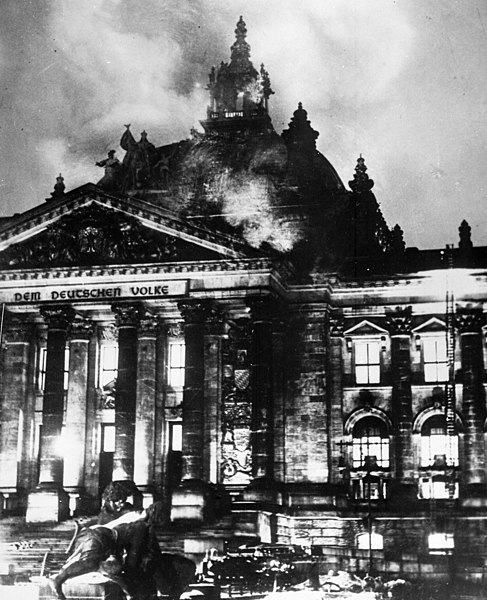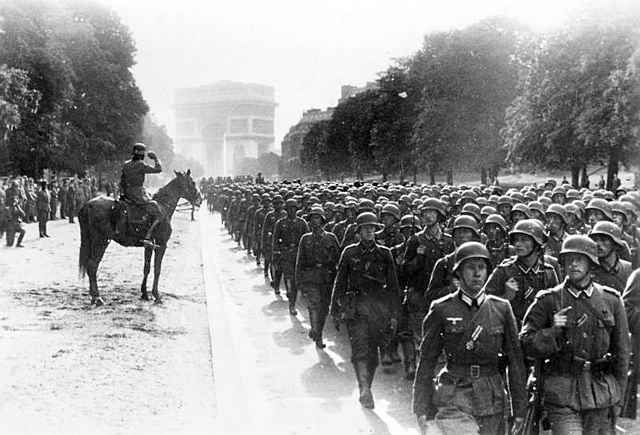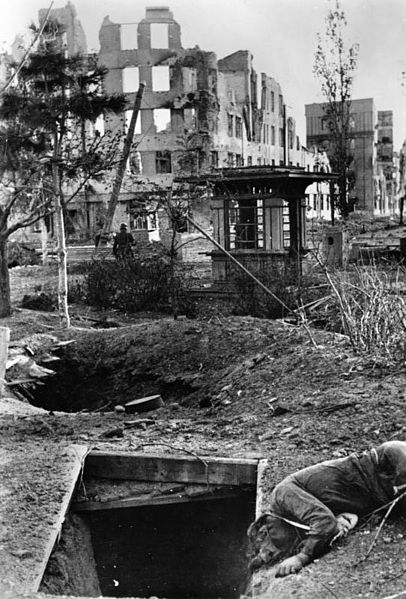Marinus van der Lubbe was a Dutch communist who was tried, convicted, and executed by the government of Nazi Germany for allegedly setting fire to the Reichstag building—the national parliament of Germany—on 27 February 1933. During his trial, the prosecution argued that van der Lubbe had acted on behalf of a wider communist conspiracy, while left-wing anti-Nazis argued that the fire was a false flag attack arranged by the Nazis themselves. Most historians agree that van der Lubbe acted alone. Nearly 75 years after the event, the German government granted van der Lubbe a posthumous pardon.
Van der Lubbe in 1933.
The Reichstag building afire
The window through which van der Lubbe allegedly entered the building
Memorial at the Südfriedhof in Leipzig – the stones placed are a Jewish grave symbol termed matzevot, to show respect
Nazi Germany, officially known as the German Reich and later the Greater German Reich, is a term used to describe the German state between 1933 and 1945, when Adolf Hitler and the Nazi Party controlled the country, transforming it into a totalitarian dictatorship. The Third Reich, meaning "Third Realm" or "Third Empire", referred to the Nazi claim that Nazi Germany was the successor to the earlier Holy Roman Empire (800–1806) and German Empire (1871–1918). The Third Reich, which the Nazis referred to as the Thousand-Year Reich, ended in May 1945, after only 12 years, when the Allies defeated Germany and entered the capital, Berlin, ending World War II in Europe.
Adolf Hitler became Germany's head of state, with the title of Führer und Reichskanzler, in 1934.
Joseph Goebbels, Reich Minister of Public Enlightenment and Propaganda
German soldiers march near the Arc de Triomphe in Paris, 14 June 1940.
Death and destruction during the Battle of Stalingrad, October 1942








